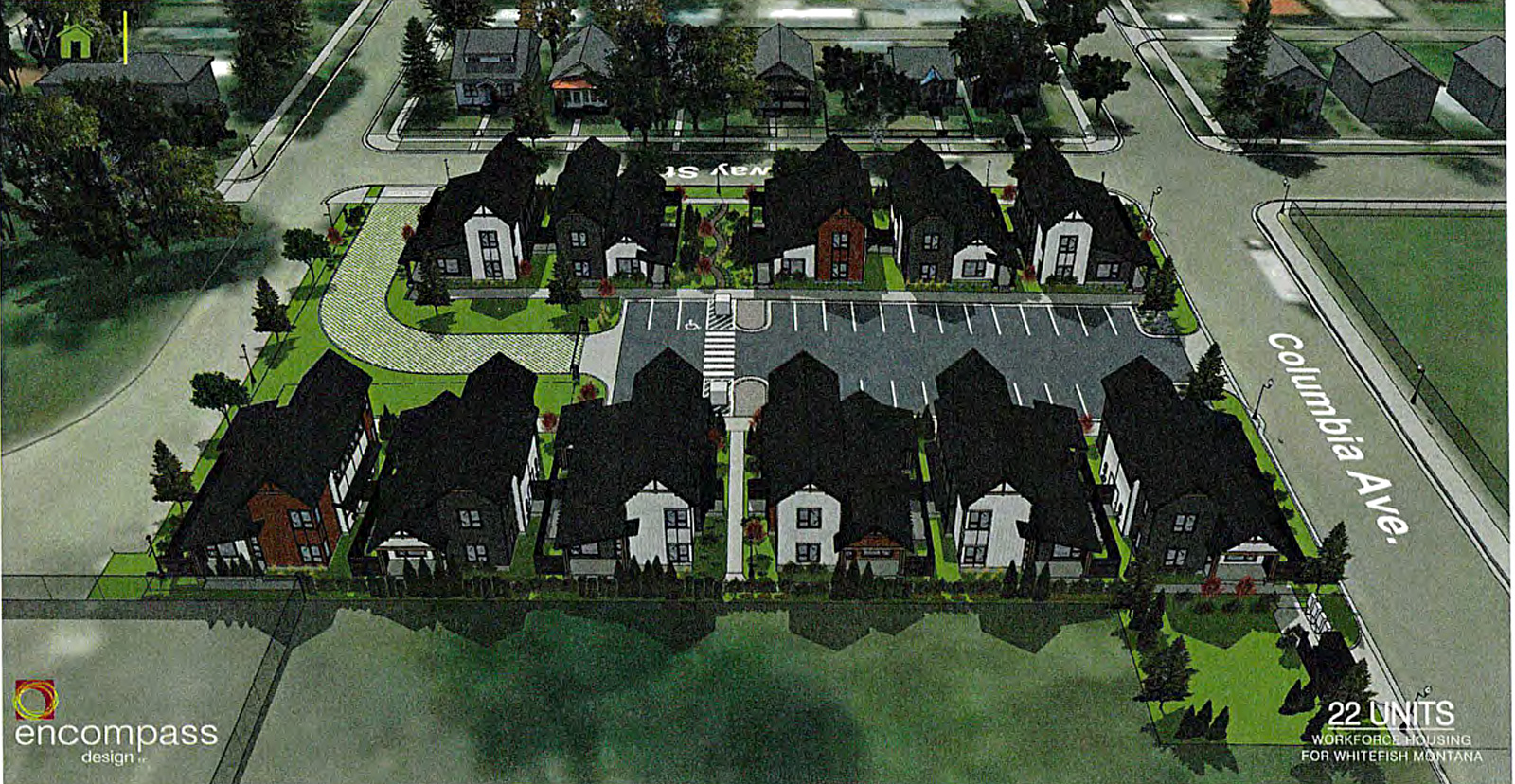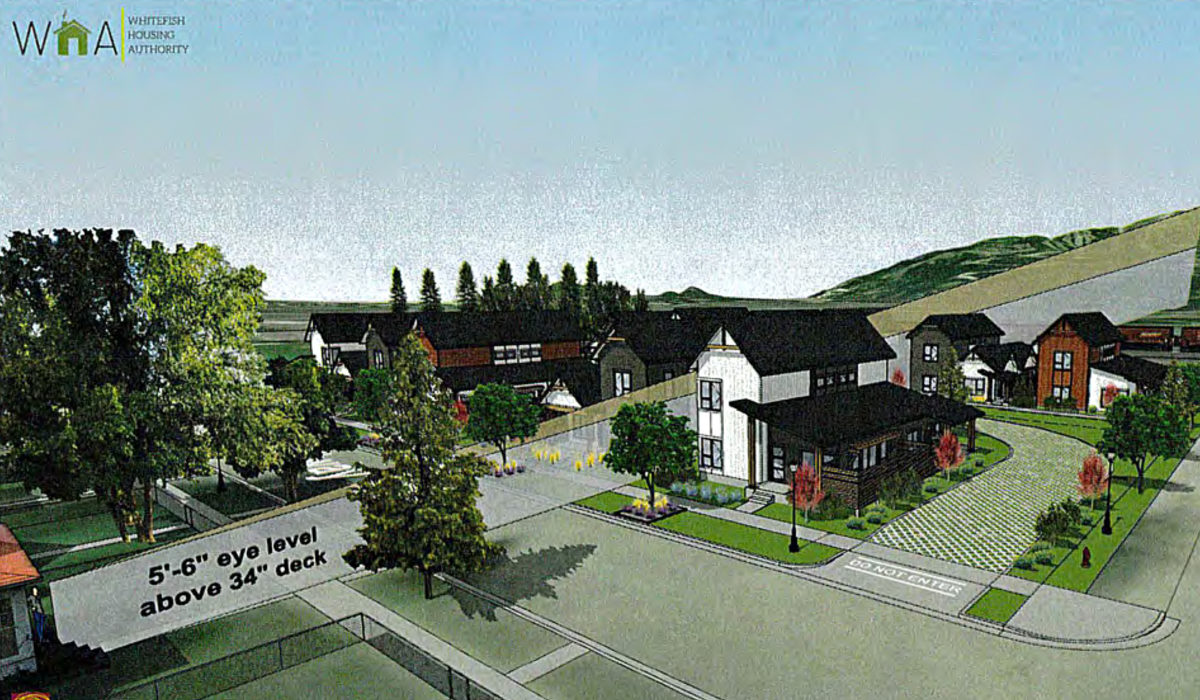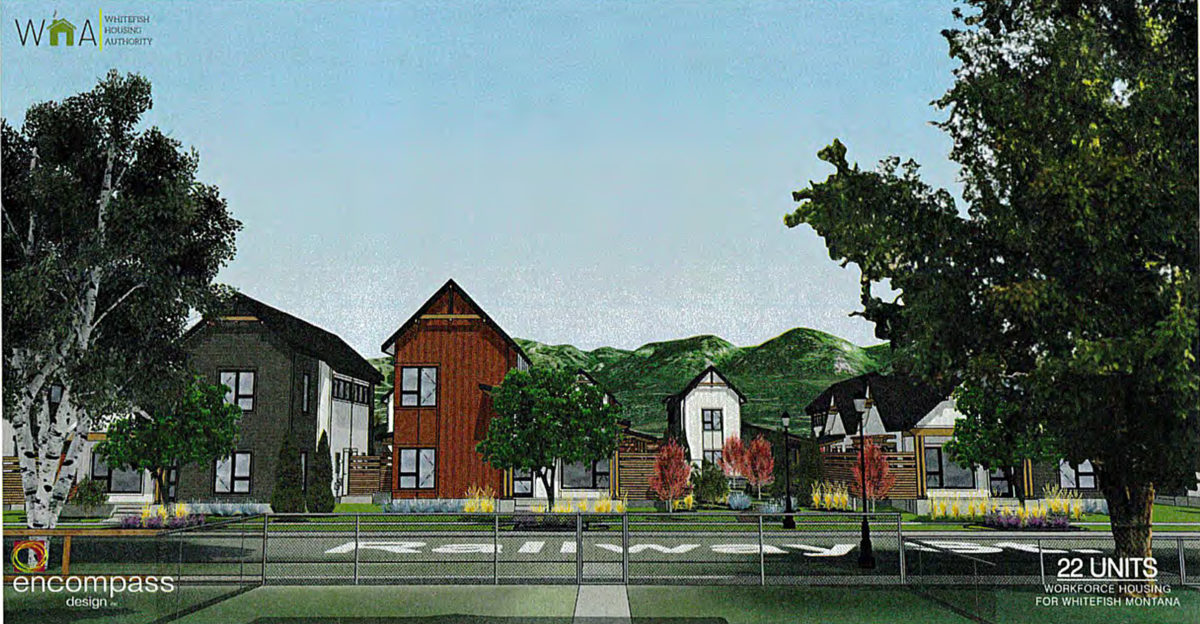Whitefish Council Approves Development Involving 22 Deed-Restricted Townhouses
The city needs 975 units of housing priced below market rate by 2030 in order to keep up with job growth and its current housing shortfall, according to a report released last summer
By Mike Kordenbrock
A planned unit development for 22 deed-restricted townhouses was approved Dec. 5 by the Whitefish City Council, marking a small step forward in a community that continues to struggle to address housing affordability and shortages.
The project, called the Depot Park Townhomes (formerly known as the “The Snow Lot”), was brought before the council for approval by the Whitefish Housing Authority, and its approval was previously recommended by city staff and the Whitefish Planning Board.
Councilor Frank Sweeney was absent from the meeting. The remaining councilors all voted in favor of the project.
The Depot Park Townhomes will be constructed on a 1.64-acre piece of land north of Railway Street, east of Columbia Avenue and south of the railroad tracks. The two-bedroom townhouses constructed for the development will be spread across an 11-lot subdivision, and all of them will be deed-restricted for ownership for people making between 80% and 150% of the area median income. The deed-restriction also requires that the homes be occupied by the owner, and caps the resale value at a “small appreciation rate,” to prevent someone from purchasing one at a discount and reselling it on the open market, Whitefish Housing Authority Vice Chair Ben Johnson said. The land was given by the city to the housing authority in June of 2020 and has most recently been a snow storage location. The project was identified in the 2017 Strategic Housing Plan as a high priority project.

The housing authority asked for multiple zoning deviations including one to reduce parking spaces per unit from the WR-4 zoning standard of two per unit to 1.45 spaces per unit.
In order to address the current housing shortfall and keep up with job growth, 1,300 new units of housing are needed in Whitefish by 2030, according to a housing needs assessment report published by the city over the summer. The report found 975 units would need to be priced below market rate. From 2016 through 2021 only 76 units of below market rate housing were built in Whitefish. At the time of the report’s publication in August, another 41 were expected to become available by 2025.
“We have a significant need right now,” Councilor Ben Davis said. “And this type of housing product is something that is unable to be produced by the private sector, generally speaking. It’s only 22 units, and we need hundreds, but that’s 22 families that get to continue to grow in our community that otherwise wouldn’t. And we owe it to them to continue to push forward on this and on other opportunities to do similar things.” He also said he doesn’t think the project will devalue homes in the area, which was a concern brought up by one of two people who spoke in opposition to the project and who also brought up concerns about parking and obstructed views of the mountains. Another seven people spoke in favor of the project. Among the proponents of the project at the meeting were Shelter WF co-founders Nathan Dugan and Mallory Phillips, who founded their nonprofit to confront housing inequality after the Mountain Gateway project was voted down.
Councilor Giuseppe Caltabiano at one point referred to earlier versions of the project with a greater housing density and said he wished the project was more dense with housing units.
Councilor Steve Qunell, the only member of the council to vote last February in favor of the Mountain Gateway development that would have brought 318 new units of housing, including 32 deed-restricted units, echoed an earlier commenter in calling the project a good step.
“As most of you know I’m an advocate for workforce housing in this community and I have been. A big part of the reason why is the people who built this town were workforce people. They weren’t people who came in as vacation home buyers and live here part time,” Qunell said. “They were people that were hard working and increasingly those people have been pushed out of this town and that is what has formed the core of this town, and the places and businesses that were built by these people. And if we lose that segment of our population, we are going to become just like any other ski town in places that we know we don’t like.”
Councilor Rebecca Norton failed to add additional conditions of approval for the project. One would have required trees on Railway Street to be placed at the apex of the homes to not block the view of the mountains from the south, and another would have required vibration mitigation and sound-proofing into all units. Norton had earlier asked about concerns she had heard about the sound of passing trains near the development.
Jenn Clary, a project architect with Encompass Design, said a sound engineer was working on an assessment, and homes on the railroad side would likely have increased window thickness and “beefed up” walls to mitigate noise. She also said the design was product of listening to neighbors, and that they had designed the homes to be small and maintain the viewshed.
